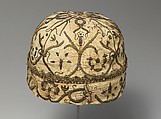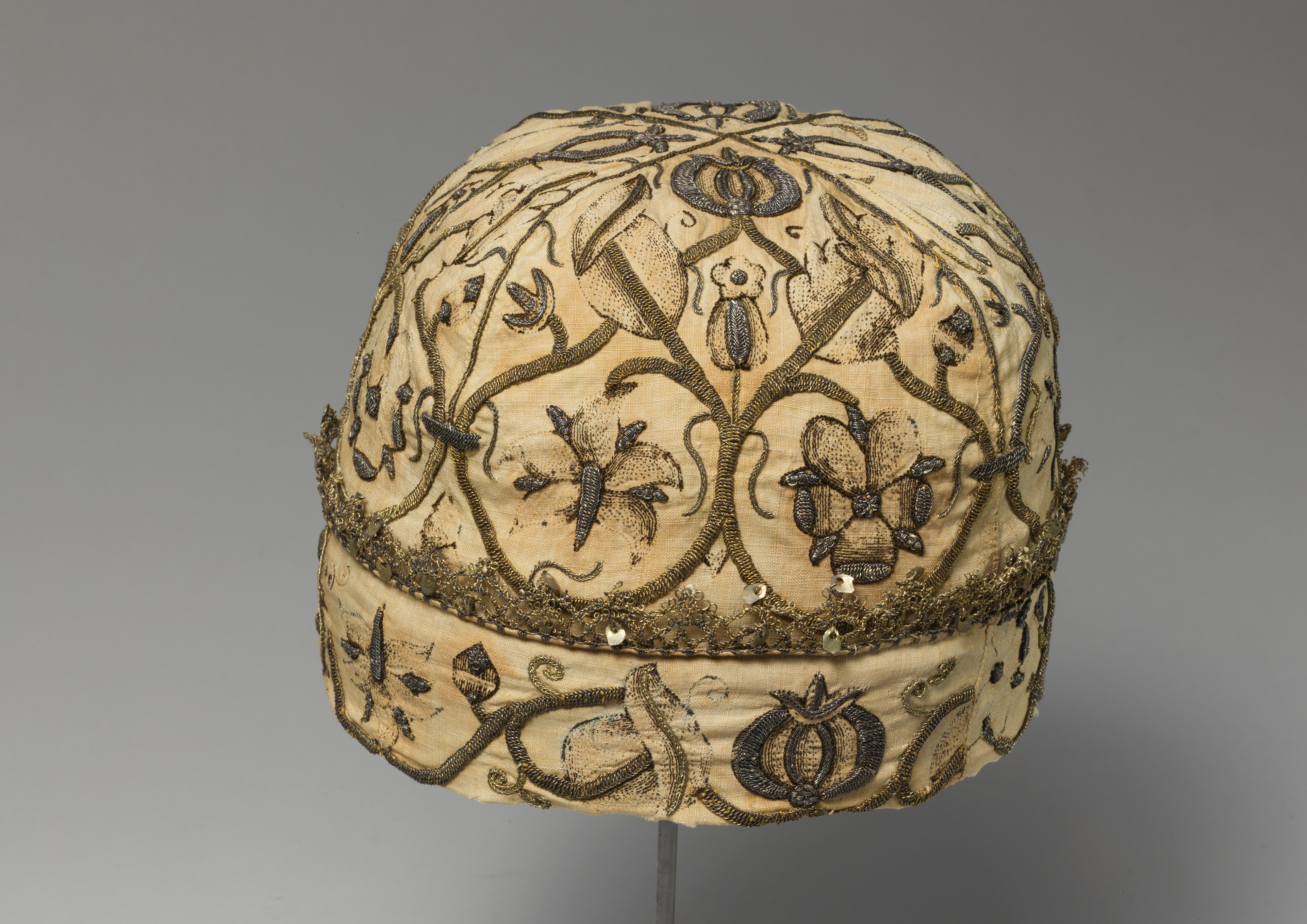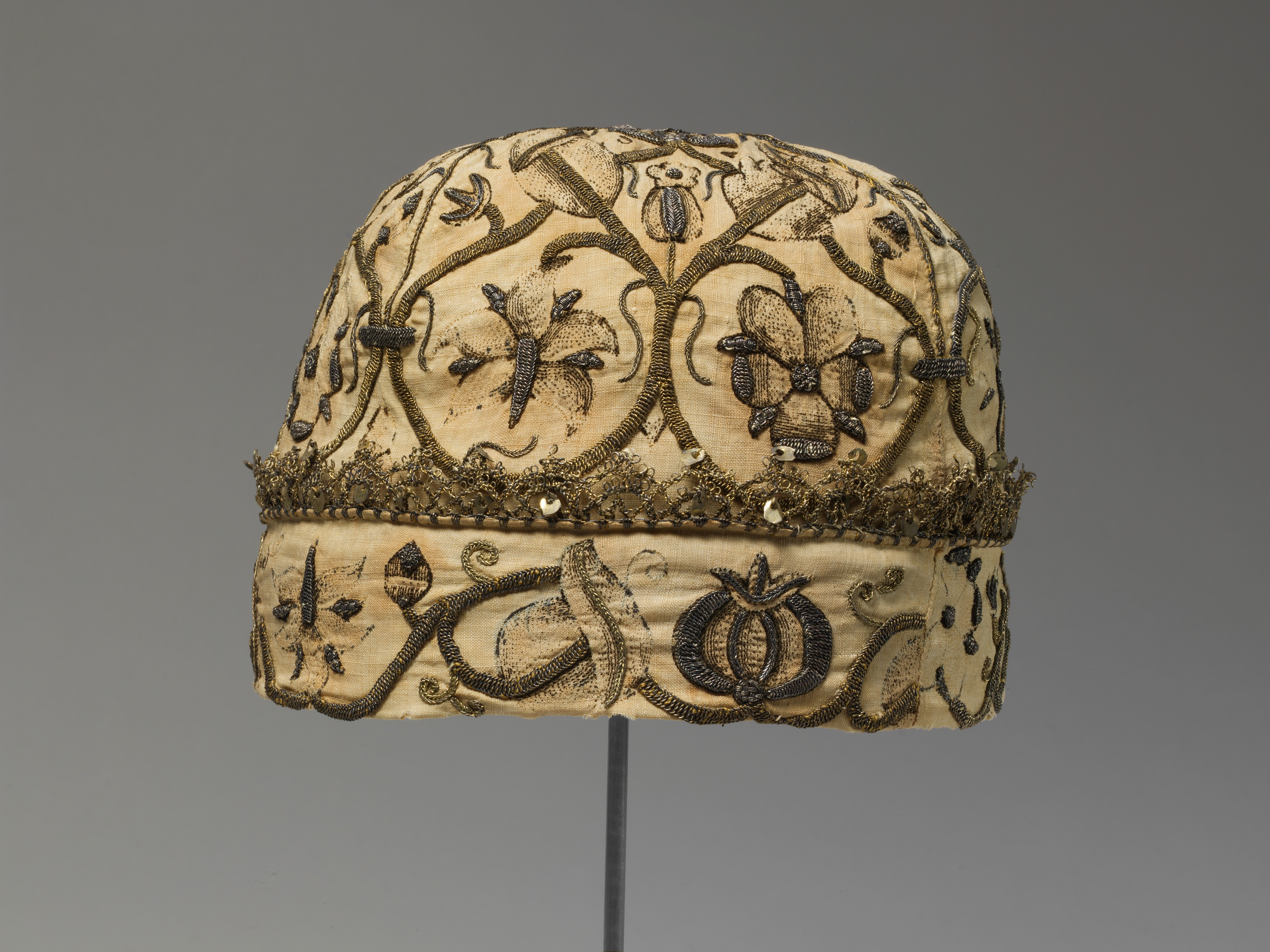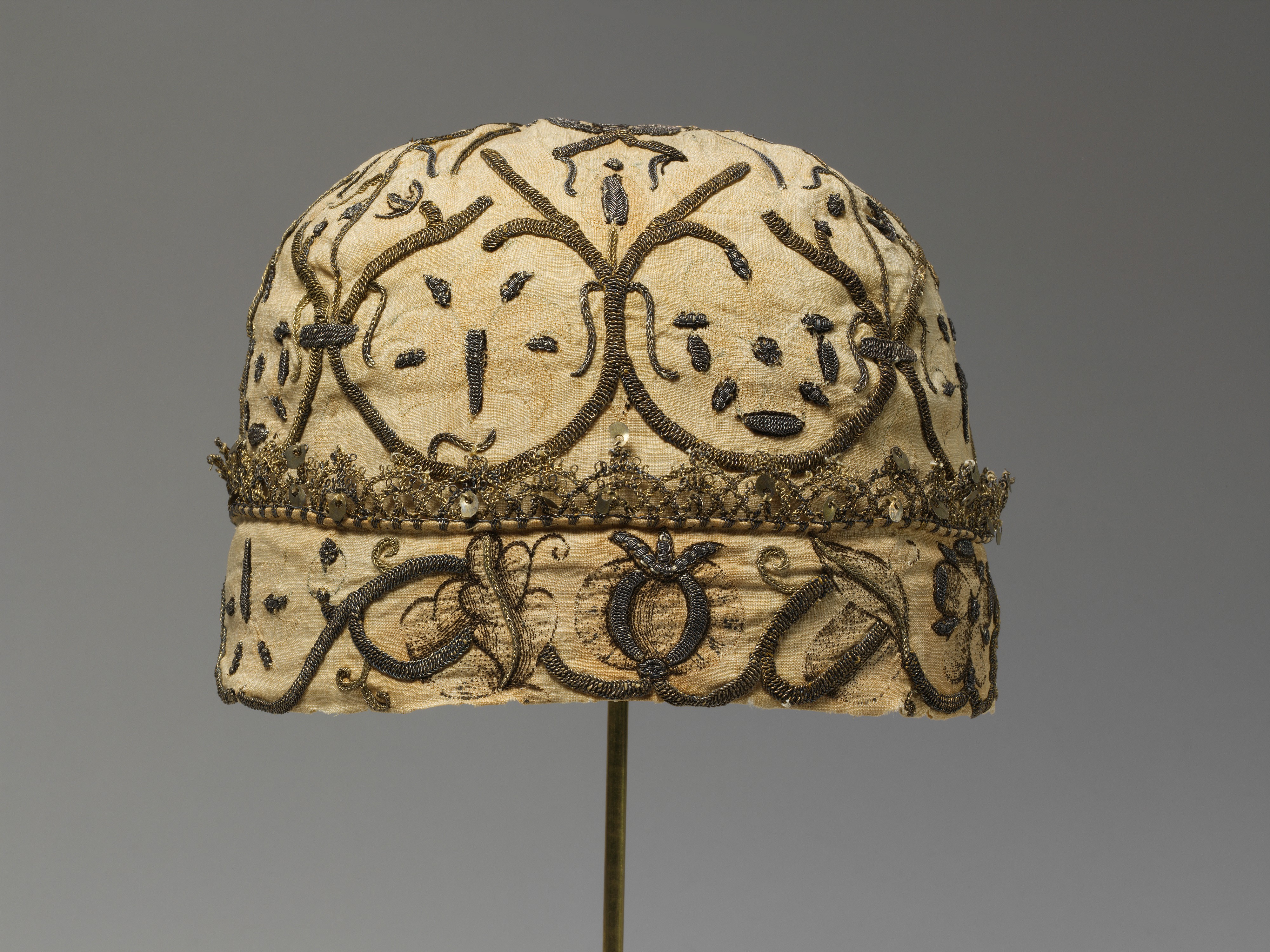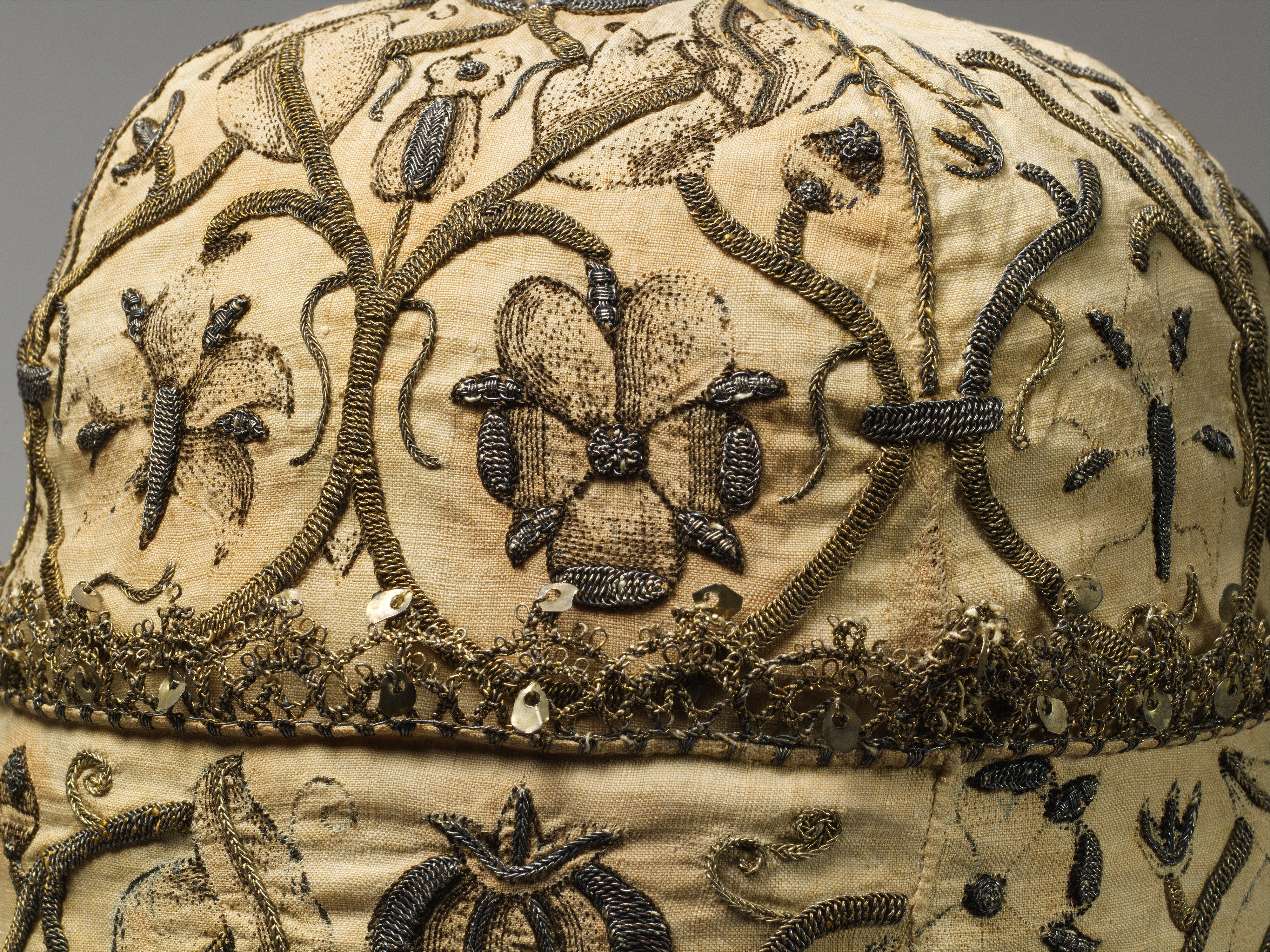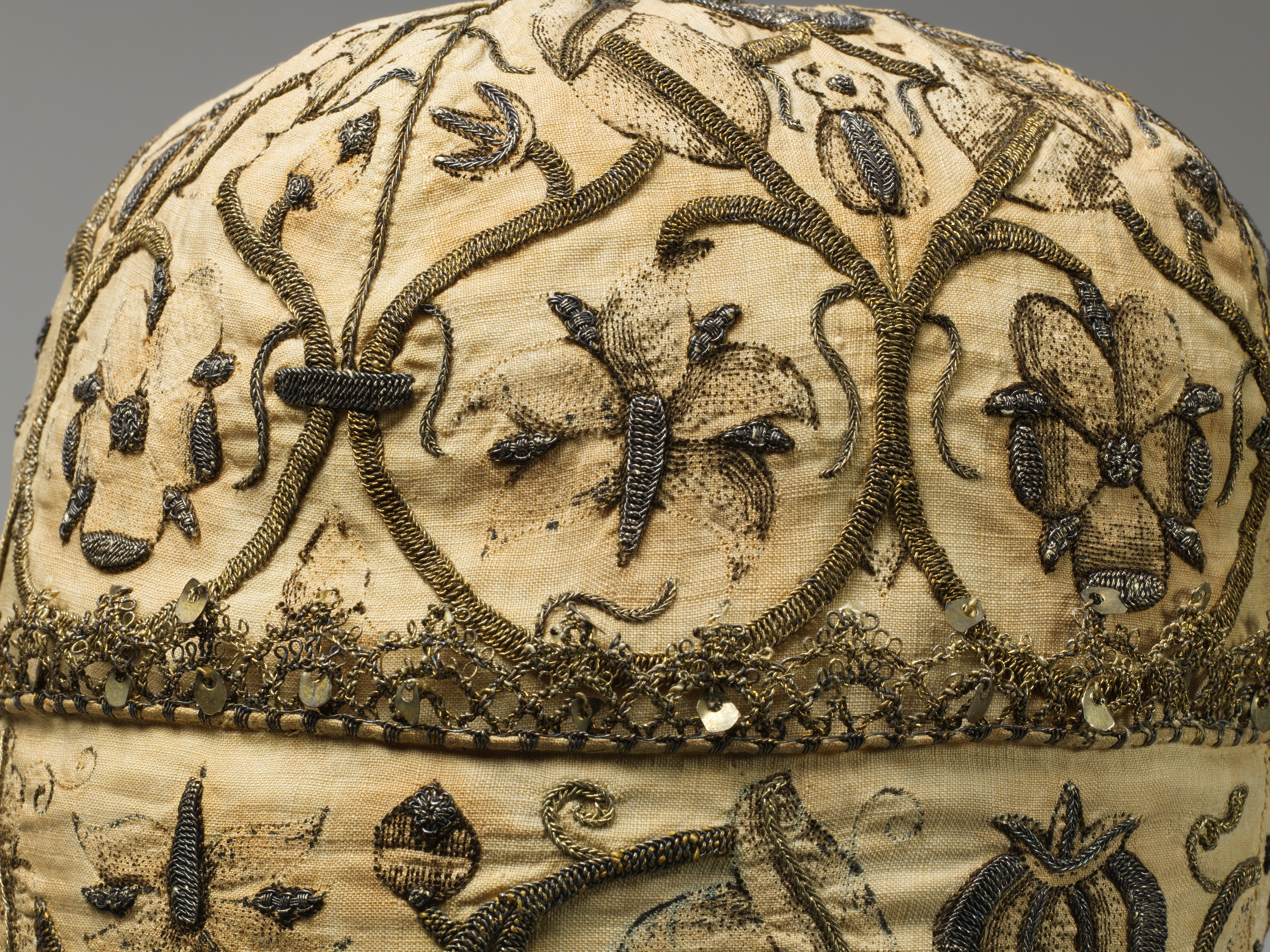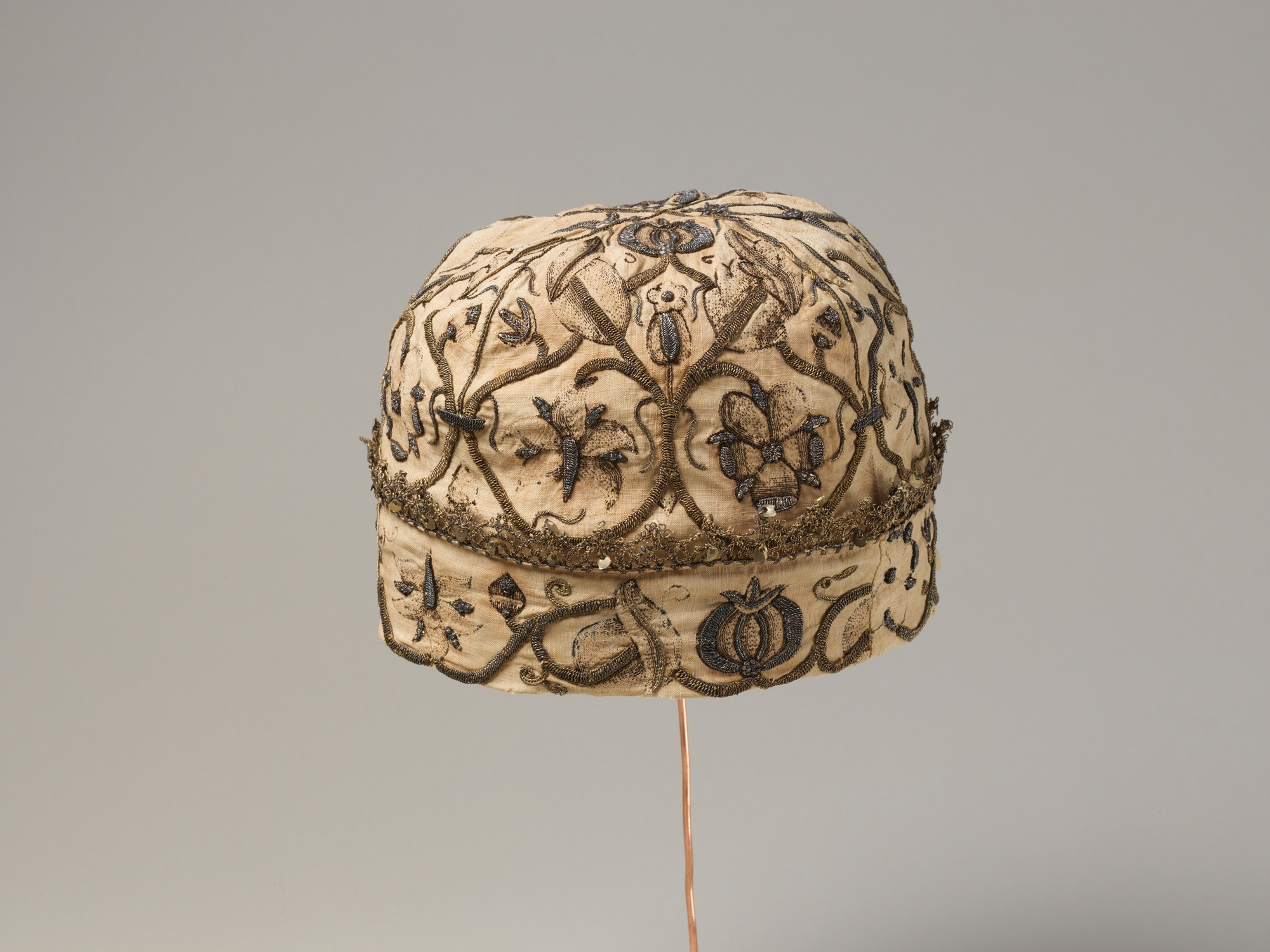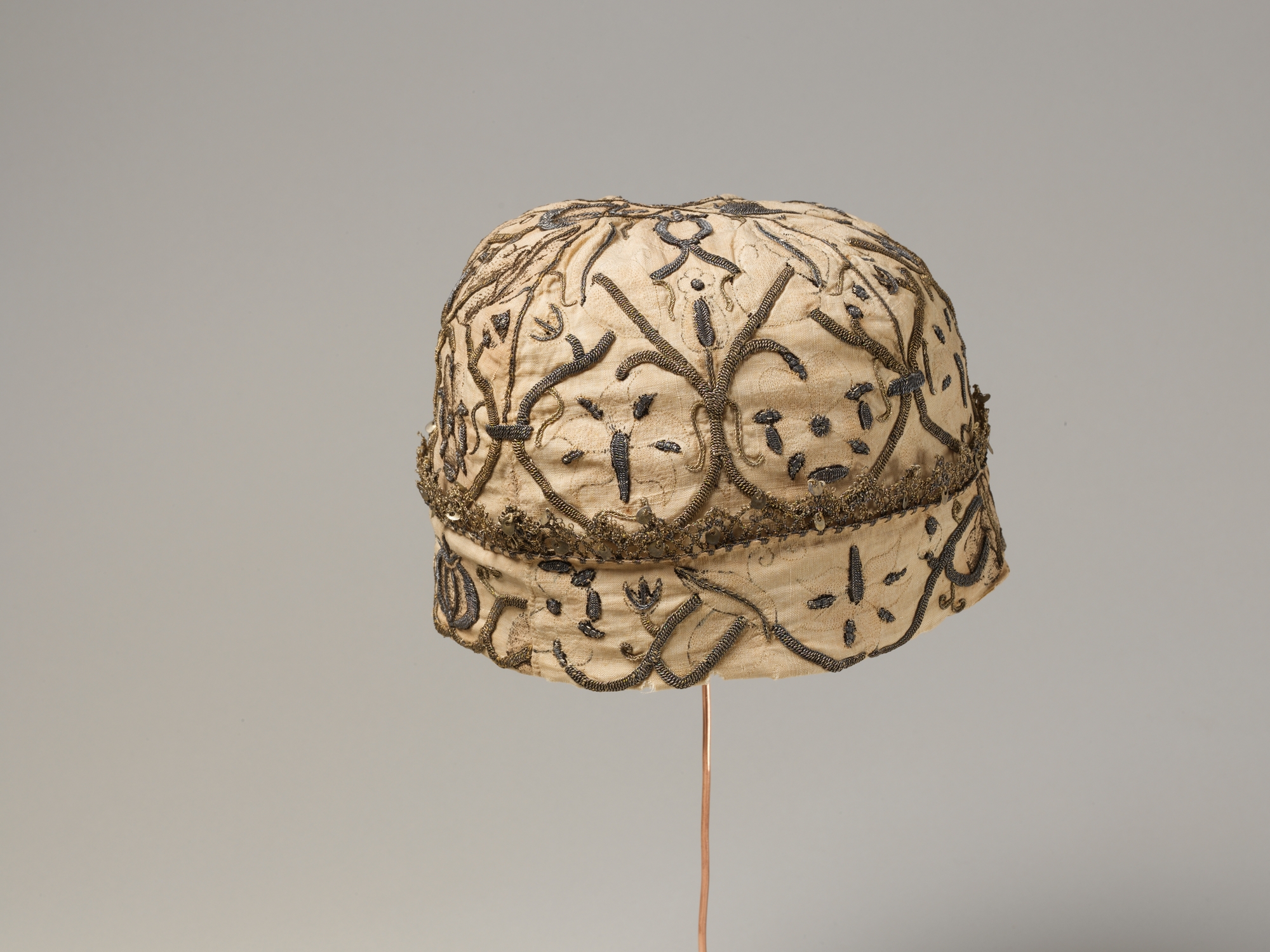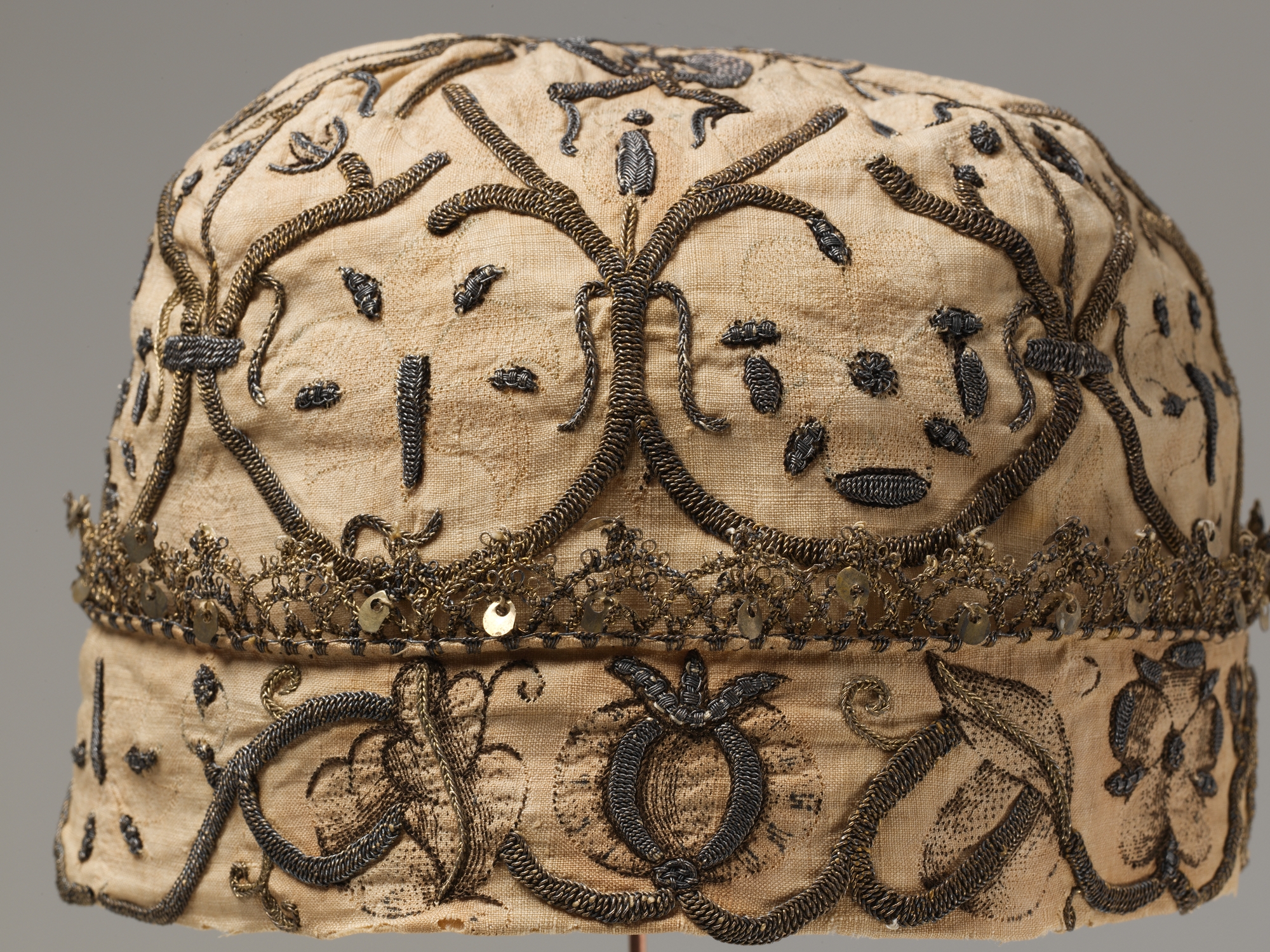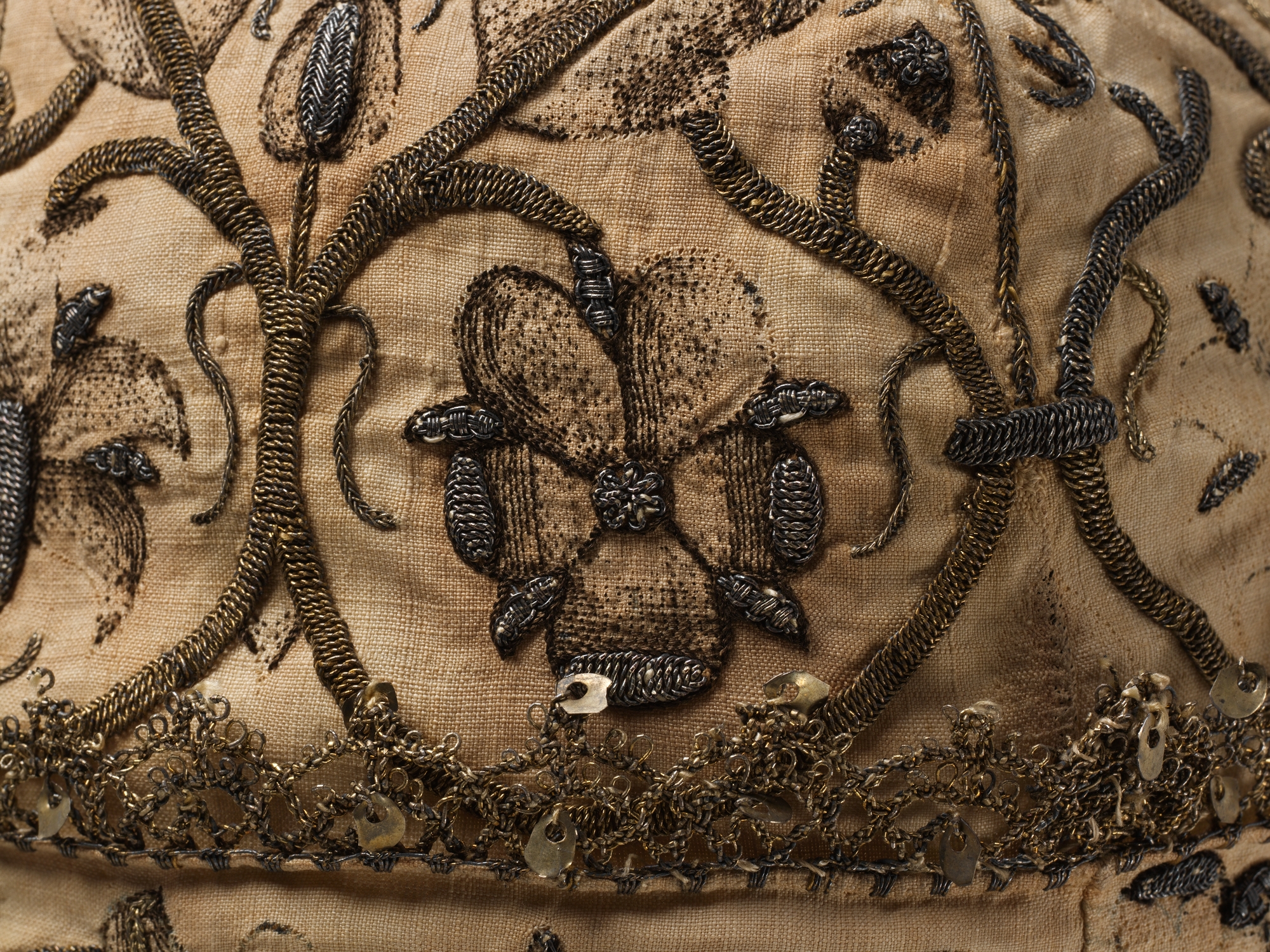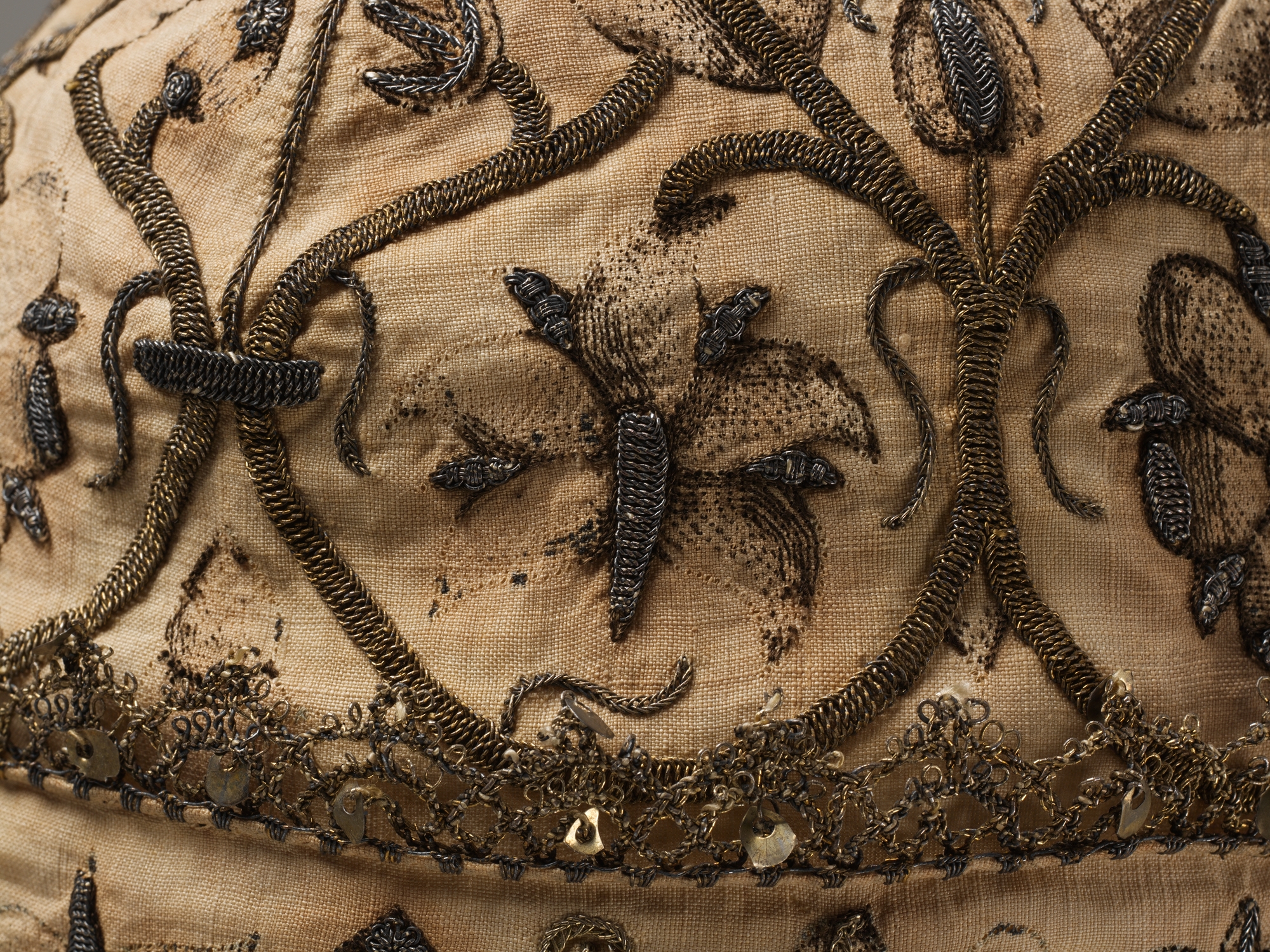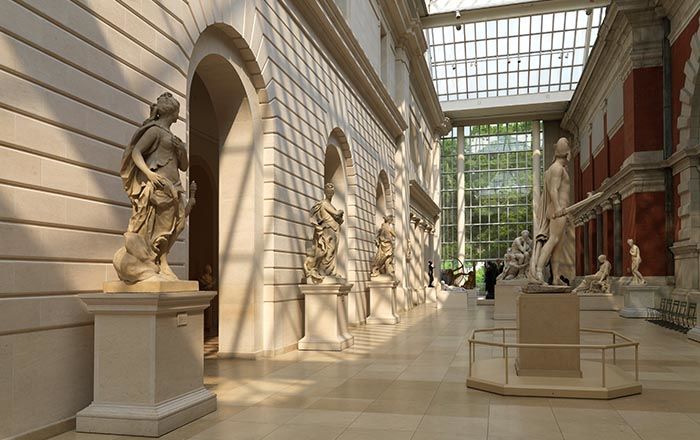Night cap
Not on view
In the sixteenth century, as now, clothing could serve as a protective layer to mediate one’s environment. The nightcap—like the nightgown—was generally informal attire, worn beneath one’s hat in public, or when indoors, to insulate against illness and drafty interiors. Lord Treasurer Buckhurst, for example, complained in February 1601 that though he had “put on a very warm night cap,” he still experienced “such a chilliness as though I were towards an [illness].”
Despite their typically private setting, many nightcaps were crafted by skilled professionals. This example features lavish details rendered in black silk, silver and gold metal thread on fine linen. The black embroidery is now worn and the metal, tarnished, but the raised, three-dimensional effect, particularly with the lace and spangle trimmings, would have originally been very sumptuous. Its textured, jewel-like quality can be somewhat recovered by comparing this example to one at the Museum of London (inv. 42.51).
The motifs represent scrolling borages, roses, and pomegranates. In this case, the floral elements may allude to the popularly professed health benefits of flowers and herbs. Borages, according to herbalist William Turner’s A New Herball (1551), eased diseases of the liver (that, or one could make “a good julep” of it).
This image cannot be enlarged, viewed at full screen, or downloaded.
This artwork is meant to be viewed from right to left. Scroll left to view more.
